'Onward' interview: Pixar producer Kori Rae says the film didn't always have a fantasy setting (exclusive)
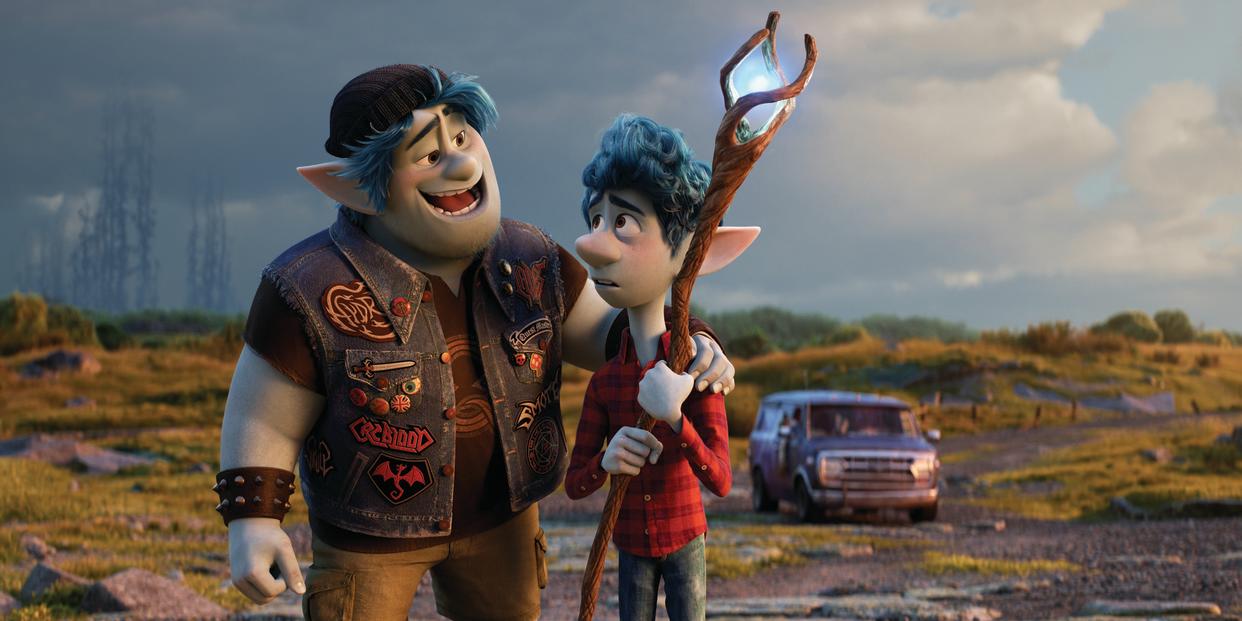
After defying the odds with Toy Story 4, the unexpectedly perfect epilogue to the perfect trilogy, Pixar is returning to its roots in 2020 with two entirely new, original properties: Onward in March and Soul in June. Directed by Monsters University’s Dan Scanlon, Onward is produced by Pixar stalwart Kori Rae whose credits at the studio stretch back to 1998’s A Bug’s Life.
Set in a modern fantasy world, populated by gnomes, goblins and wizards with mobile phones, where magic has... well, lost its magic, and unicorns are pests who eat garbage from trash cans, it tells the story of two elf brothers Ian and Barley Lightfoot, voiced by Marvel stars Tom Holland and Chris Pratt.
The odd couple siblings embark on a quest to resurrect their father, who sadly died when they were young, and it’s a deeply personal project for Scanlon who also lost his father at an early age. Years later, he heard his father’s voice for the first time when an old recording from a wedding resurfaced, sparking the idea for Onward.
Trailers for the film have leaned heavily into its unique fantasy setting (think Netflix’s Bright, but much more family friendly), but at a recent preview event for the film, Rae told Yahoo that the mythical fantasy world was a late addition to the project.
Read more: Toy Story 4’s alternate ending
As part of Pixar’s ongoing development cycles, studio creatives are annually invited to pitch potential projects, with only the most compelling ideas moving forward towards production. Rae says the initial pitch for the film was radically different.
“We pitched a couple of films,” Rae explained, “but this one obviously stood out because of the personal nature of it.
“The film was so different back then and they evolve and they change, but the heart of the story was still there. It was the story of two brothers who go on a journey to find remnants of their father. So there was a sibling aspect that was there from the beginning.
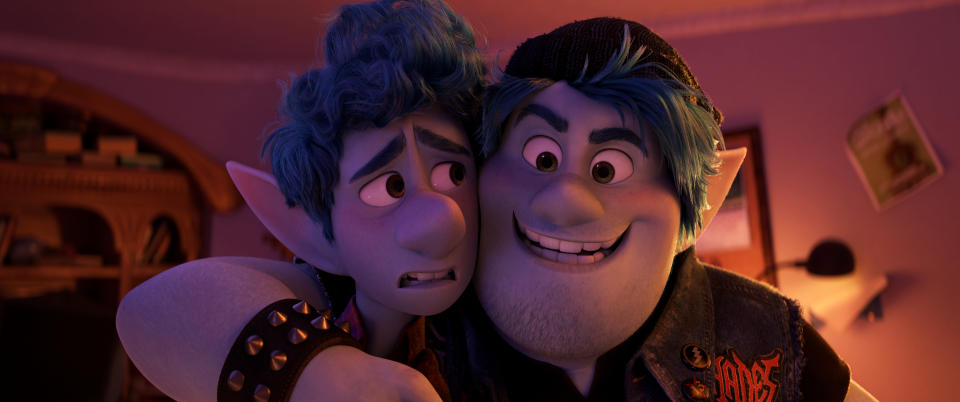
“And then – I can't spoil the ending – but we've had the ending of the film from the very, very beginning. And so that has been our stake in the ground so to speak, and so I think that ending... people really responded to [it] at the time when we first pitched it.”
“And that was the hook that everyone got excited about and could see, even though the film evolved so much over the coming years, that the heart – the sibling story and the heart of the ending – was really the clincher.
Was the fantasy element always been part of the story when it was pitched, we asked?
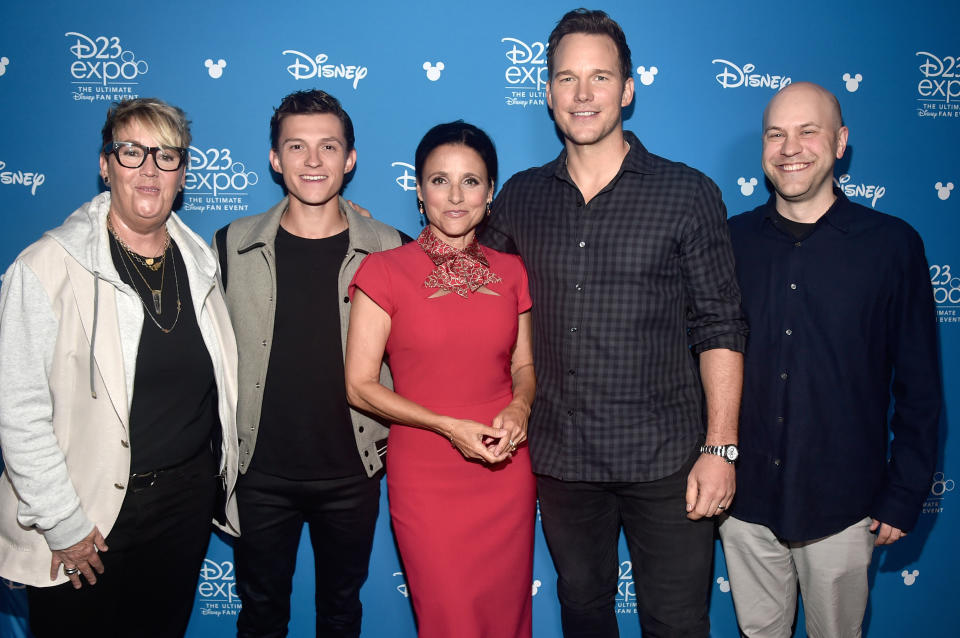
“There was always a fantasy [element], but we weren't sure how to portray it. Because there was magic, so first there was [just] magic, and it wasn't initially in a fantasy setting. That kind of came a little bit later, but we knew, because of the magic aspect of it and if we had wizards, that we would have to go that way, [to] go that route into a fantasy world.
“But at the very beginning it was really more about magic. And then it kind of unfolded and evolved into fantasy.”
Here’s what else we learned about Onward, from how the film landed two MCU icons to the film’s ‘70s rock influence.
How do you go about building a fantasy world from the ground up?
We didn't want to do a period piece. We dabbled with that at the beginning again, knowing that we needed magic and fantasy. And we were watching a ton of movies and doing research and everything, and we didn't really want to have it take place in the world of the prologue that we showed.
We didn't really want the whole film to take place in that. We wanted remnants of that, but Dan really wanted to turn it on its head and say, ‘Well, what if it's modern day? And what if we can create a world and bring those elements into modern day?
Because it's something that we hadn't really seen before. So the process was just figuring out what would be modern day fantasy and how do we reflect that?
And it was quite a challenge in the design aspect of the film, to try to figure out how much modern, and how much fantasy? And so there was a lot of work that went into figuring out scene to scene what that ratio was.

We came up with a rule, so to speak, that things would be like 70% modern and 30% fantasy. And we realised quickly that, because the characters are all fantasy characters, that that outweighed... it kind of shifted the balance, and so scene by scene, depending what characters were in the sequence, then we would have to maybe back off a little bit on the fantasy of the world, so that that balance was always there.
Read more: What happened to the humans in the world of Cars?
Because if we had a truly fantasy [world] and we wanted there to be a kind of evolution through the film, where they start out in their neighbourhood and then we get a little bit more into fantasy as they go to the bottomless pit and later in the film, it gets a little bit more fantasy. And it works. That balance holds, because it's really just Ian and Barley mostly at that time, there aren't a lot of other characters who are changing that balance.
So the challenge was getting things to meld and to match and not weight it one way or the other, if that makes sense?
There seems to be a 70s rock aesthetic to it - prog-rock record covers specifically - particularly with Barley...
For him, yes. There were versions of the film where he was way more into music, and we shifted away from that. But he was a bard at some point or something in one of the many versions of the film that we worked on. But I think what we wanted, the character aspect of that, is just that he's brash and loud and into fantasy rock. Just because it would be annoying to Ian.
Just because it would be too much and too out there for him. So that was the whole point of that. The interior of his van, his vest. It's all just too much for Ian. It's just like what would Ian hate? And that's how we designed Barley.
You must have had a lot of fun coming up with the band names on the badges of his jacket?
Yeah, the graphics in the film are fabulous. The team had a great time working on those graphics.

You said you struggled to find the right person to play Ian: How much did seeing Tom Holland as Spider-Man influence your decision, because Peter Parker is also a nerdy teenager that doesn’t quite fit in...
Well, I think it was really encouraging when we watched his acting in that, because he's funny, a little bit nerdy, he just checked all the boxes. And he was just so compelling in that film, and we felt like he would be really just bring Ian to life.
And did you speak to a lot of people to try and find the right person to play Ian?
We didn't audition. We auditioned a few people before we met with Tom, but we just weren't finding it. And I think some of that reason is we were just struggling to figure out who the character was to be quite honest.
And what are the subtleties of the character, the nuances that we could be really looking for that vocal quality? Because that's really what we're looking for. We're looking for acting ability, but also a specific vocal quality and having a 16-year-old is an interesting age group to try to navigate, because you want a solid actor who has experience, but then they will sound too old.

And then finding a 16 or 17-year-old with the breadth of experience is also tricky. And so Tom was just that sweet spot of having great acting ability and a lot of experience, yet still having that youthful voice, and that youthful kind of nerdy little, you know, not quite sure of himself, voice that comes that comes through. Even though he's so amazing and quite confident himself, it's just his vocal quality was perfect.
And then Chris Pratt joined after Tom Holland?
Yes.
Possibly because of their relationship in the real world?

No, it was just a coincidence. We sit in a room and we don't look. We play the voices blind. We don't know who the actors are, and we're just really, really listening to the character and the vocal quality.
Read more: Ratatouille director shoots down fan theory
And so we just were listening to a bunch of actors for Barley and then once we kind of honed in on a few, then we would play them against Tom and see how they sound together. Because that's obviously important and especially in this film, where there's a whole lot of talking. And there's a lot of dialogue between these brothers. So we needed to make sure that their voices worked well together. And they did, so that's what drove it and it was kind of just a complete bonus and luck that they had this relationship.
Presumably you cast Julia Louis Dreyfus because she's amazing and why wouldn’t you?
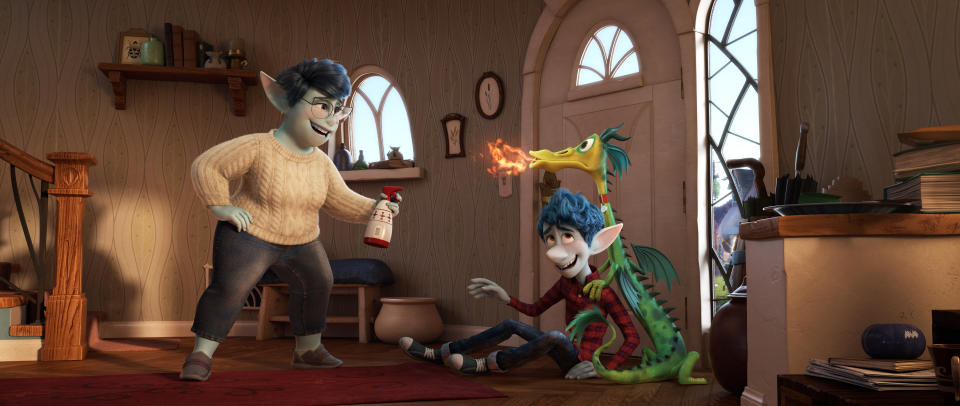
Exactly, exactly. Because we're two of the hugest fans of hers. She's amazing and I was lucky enough to work with her on A Bug's Life. I was managing the animation department and I was able to go to a couple of recording sessions with her when she was Princess Atta in A Bug's Life. She's perfect.
How many different races of creatures are there in the film?
When we started we just opened it up just to see how much we needed to fill out the world, thinking what would make it interesting. From shapes and sizes, and we wanted to just make everything very diverse, and have the world look full with various creatures.

And so we started big, and then realised that we didn't have to have as many as we thought, necessarily. Because we could do different shapes, or you know, huge trolls and then smaller trolls. And so we did adults, children of each of those species. And we wanted to use ones that were recognisable. That was important to us so that people understood.
People kind of know what a Satyr and what a Centaur is, and so we wanted to take some of the more common ones if you will. And then gnomes, I don't know, they were just funny and adorable with their little red hat's. So we just had fun with it mostly.
Have you thought about what sort of creature yourself and Dan would be in that world?
I haven't actually, I'm sure I’m gonna get asked that a lot. It's hard not to relate to the main characters but I think I think the Manticore is pretty cool.
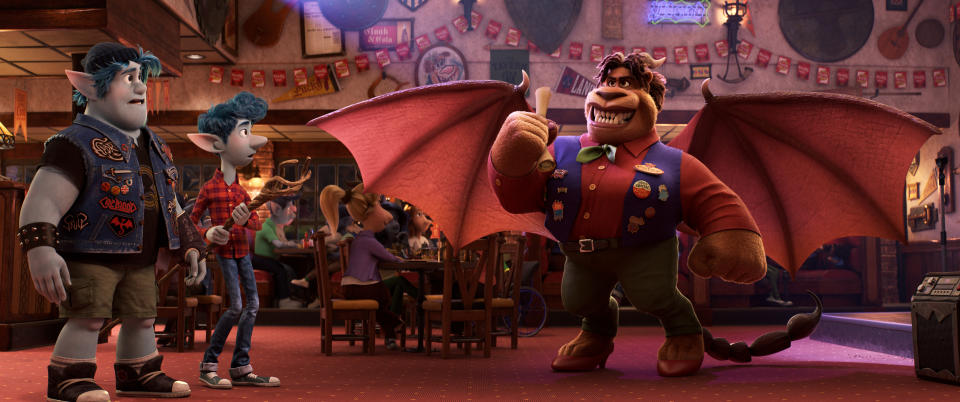
How did you decide on the visual language of this world, and how would you sum it up?
I think because it's a fantasy world we wanted to make sure that it had a definite level of stylisation. So we weren't going for photoreal. It is fairly stylised, but just because of our rendering and everything, things look somewhat photo real.
But we were going for a more stylised look, so that it matched the characters, and all of the craziness of the fantasy world. So even with Guinevere, she's a car, but we tried to make her even a little bit stylised, with a lot of the accoutrement that's on her and in her and stuff like that.

You just try to find it in the design. You do a bunch of tests and try to figure out what level of that characterisation we're going for, but we were we were trying to push it a little bit stylised.
In terms of the technology, is there anything new in this film that Pixar developed animation-wise that we've never seen before?
We purposefully didn't really choose, and the story didn't demand, for us to do any groundbreaking new technology for the film.
What we did that was challenging was a lot of the simulation, a lot of the cloth... we have a lot of hair and cloth, and cloth on hair, and layers of that. So that was a little bit of a challenge but we didn't really do any massive groundbreaking technology.

And it was kind of a choice. The story didn't necessarily demand it. And we knew we needed effects. We needed magic and, but we already have a lot of that. We already have the technology for a lot of that. So things that we needed for the story, we already had. So it was just trying to make it look great.
Onward comes to cinemas on 6 March. Watch a trailer below.

 Yahoo Movies
Yahoo Movies 

